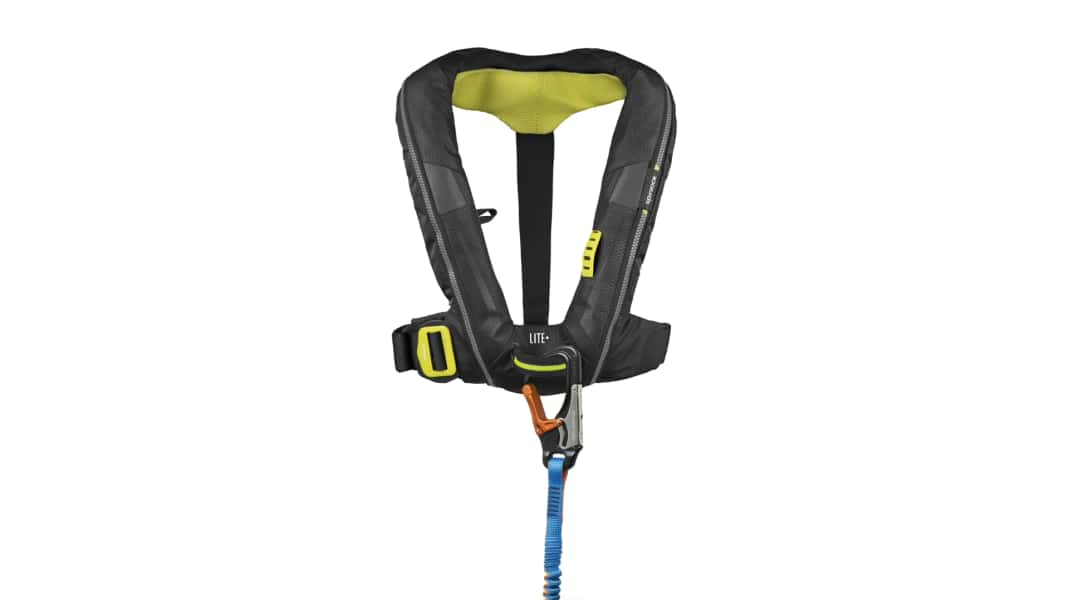
Spinlock is expanding its range to include a lightweight lifejacket from the Lite+ series with 275 newtons of buoyancy. Previously, the Deckvest Lite+ was only available with 170 newtons of buoyancy, putting it in the 150 newton buoyancy class. The next higher category, with lifejackets offering 275 newtons of buoyancy and more, is recommended if the lifejacket is intended to reliably turn people in the water into a unconscious supine position.
In contrast to the heavier Deckvest 6D 275N, the new model does not have a buckle in front of the chest, but only at the side. This means that the Deckvest Lite+ 275N is pulled over the head and the harness is then fastened at the side with a stainless steel buckle. This is a little more complicated, but saves weight. The lifebelt is connected to the safety line with a soft belt loop. The design of the buoyancy compensator is also different. All these measures are designed to significantly reduce the weight. However, the manufacturer does not specify the exact weight of the waistcoat. In addition to its compact design and reduced weight, the lifejacket should fit particularly well. The neoprene insert in the neck area should also contribute to this.
The Spinlock Deckvest Lite+ is available in black for 279 euros.
Additional features of the Spinlock lifejacket
Despite its minimalist design, the Deckvest Lite+ 275N can be fitted with plenty of additional equipment. A sprayhood can also be ordered. This is highly recommended in order to be able to breathe undisturbed even in rough seas and spray. Spinlock offers two emergency lights with Pylon Lifejacket Light and Lume-On to make it easier to find you in the water. The former floats on a rod slightly above head height. The second illuminates the buoyancy chamber from the inside so that the entire lifejacket glows in the dark. In addition, the AIS-MOB2 transmitter from Ocean Signal can be integrated so that the crew or rescue services can locate a person in the water more quickly.
Faint-proof swimming position
150 or 275 Newton buoyancy, which is the right choice? According to the EN ISO 12402 standard, there are buoyancy classes of 150 and 275 newtons for sea areas. The values indicate the respective minimum buoyancy. A lifejacket in the 150 category can therefore provide far more buoyancy. However, there is one problem: the standard does not require lifejackets with a buoyancy of 150 newtons to be worn with oilskins. Only for the 275 Newton class does it say: "High seas under extreme conditions and in combination with clothing in which air can accumulate." Although oilskins are supposed to be waterproof, this property is a hindrance in MOB situations, as the air cannot escape quickly from the garments. However, these air pockets in the jacket and trousers change a person's buoyancy considerably and may counteract the buoyancy of the lifejacket. In concrete terms, this means that anyone lying on their stomach in the water will not be turned reliably. You can only breathe freely when lying on your back. According to the standard, waistcoats in the 150 Newton class cannot turn anyone wearing oilskins into a supine position where they are safe from passing out. Our practical tests have also confirmed this. >> To the 2024 rescue vest test.
